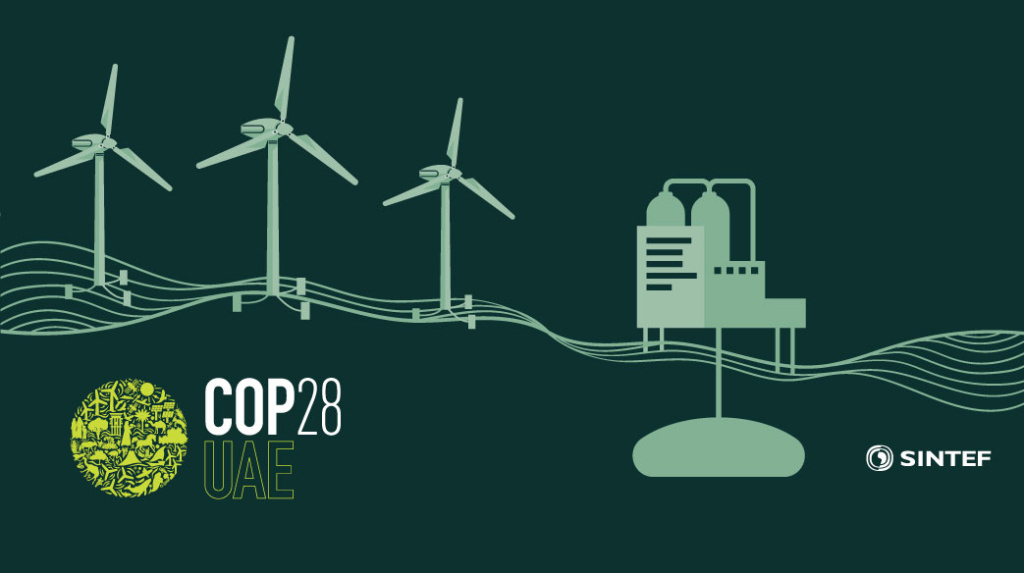Drastically reducing greenhouse gas emissions won’t be enough to achieve the goals in the Paris agreement and reach net-zero emissions by 2050. We will also need to remove excess greenhouse gases, in particular CO2, from the atmosphere and oceans. This is known as “carbon dioxide removal” (CDR).
COP28 recommendations for CDR
- In order to achieve net zero by 2050, we need to significantly reduce our current fossil emissions and remove existing emissions from the atmosphere. The IEA estimates that approximately 1.7 billion tons of CO2 need to be removed by 2050.
- Carbon removals cannot be an excuse to avoid or delay phasing out hard-to-abate fossil emissions through an “offset” mindset. Carbon removal must supplement emission cuts, not replace them. Therefore, we need national and international regulations and recommendations on the relative levels of emission cuts and CDR.
- CDR should be regulated to prevent shifting emissions from one location to another.
- We need to define which are the hard-to-abate emissions that CDR need to compensate for.
- We need to establish international guidelines and standardisation for CDR monitoring, verification, and reporting.
- Research funding for new CDR technologies must increase, focusing on identifying energy-efficient, resource-effective removal from biomass and air/ocean, and ensuring that the biomass comes from sustainable sources.
- Countries with historically high fossil emissions should allocate financing for the research and development of new solutions, including carbon capture and storage (CCS) on biomass used for energy and other industrial purposes (BECCS) and Direct Air Capture and storage of CO2 (DACS), as well as ocean-based removal. Such an approach should also address other greenhouse gases, such as nitrous oxide and methane.

The problem
The pre-industrial concentration of CO2 in the atmosphere was about 280 ppm. Today, it is approximately 420 ppm, i.e., a 50% increase. Approaching 450 ppm brings us closer to a 2 degree increase in the global temperatures. If we are to avoid this, we need substantial emission reductions through measures such as CCS, but we also need CDR. Developing and scaling CCS is crucial for the infrastructure needed for permanent CO2 storage, which is a prerequisite for deploying the CDR solutions BECCS and DACS.
CDR solutions are crucial for the 2050 net-zero goal, they are in fact what the “net” corresponds to. We need CDR to compensate for hard-to-abate emissions and also to remove historic emissions.
Emission reductions are not happening fast enough to the point that the 1.5°C target might already be out of reach. The more we delay emissions reductions, the larger the temperature overshoot above 1.5 degrees and the more insurmountable the challenge for future generations to return global temperature increase to below 1.5 degrees. IEA has this year provided an update of their Net Zero Emission (NZE) scenario from 2021. As mentioned above, CDR through BECCS and DACS need to reach 1.7 billion tons by 2050 in the NZE scenario, of which 1 billion tons from BECCS and 0.7 from DACS. This will need to come in addition to rapid and deep emission cuts.
IEA also presents a Delayed Action Case. Although delayed, this is by no means a “No Action Case”, but rather underlines the urgency of rapid and substantial emission cuts. The starting point for this case is more optimistic than current policy settings and NDCs, with the global energy sector CO2 emissions reduced by just over one-third by 2035. In addition to humans and nature facing additional severe risks due to the resulting temporary temperature overshoot of the 1.5 degree threshold, the energy use for CDR alone, in particular DACS, will in 2100 surpass the total 2022 energy demand in EU, US and Japan. 2 Gt CO2 per year would need to be captured from biomass by 2100, which would require roughly 135 million hectares of land (roughly twice the land area of Peru). Furthermore, 3.3 Gt CO2 would need to be captured from the atmosphere annually, corresponding to filtering 0.1% of the earth’s atmosphere. The costs for BECCS and DACS by 2100 would exceed 2022 fossil investments with 50%.
It cannot be repeated enough: We need rapid and deep emission cuts, and in addition we need CDR. However, despite increasing consensus on the need for CDR, we still do not have a plan for its implementation and scope. With the exception of the Inflation Reduction Act (IRA) in the USA, there are currently few incentives globally for CDR.
Political action is required, both nationally and internationally, to create markets that encourage the implementation of carbon removal. Sweden’s use of “reverse auctions” to create a market for biomass-based carbon removal is a notable example.
Furthermore, there is insufficient research funding for the development and maturation of CDR technologies. A plan is needed to develop climate-positive technologies through research and development, including identifying energy-efficient, resource-effective and sustainable biomass use.
The solution
The IEA emphasises the need for substantial amounts of CDR in order to limit global warming and fulfil the Paris Agreement goals. Urgent development of sustainable, cost-effective, and resource-efficient CDR solutions, along with more research and technology development, is crucial.
CDR should be a central tool in international climate negotiations. Guiding principles and standards for verification, measurement, and reporting need to be established. International leadership, particularly from the UN, is essential for sustainable and fair development.
CDR should always be secondary to reducing our current CO2 emissions, due to the larger scale needed for emission reduction. Therefore, CDR must not serve as an excuse to avoid or delay the phase-out of fossil energy.









Comments
No comments yet. Be the first to comment!